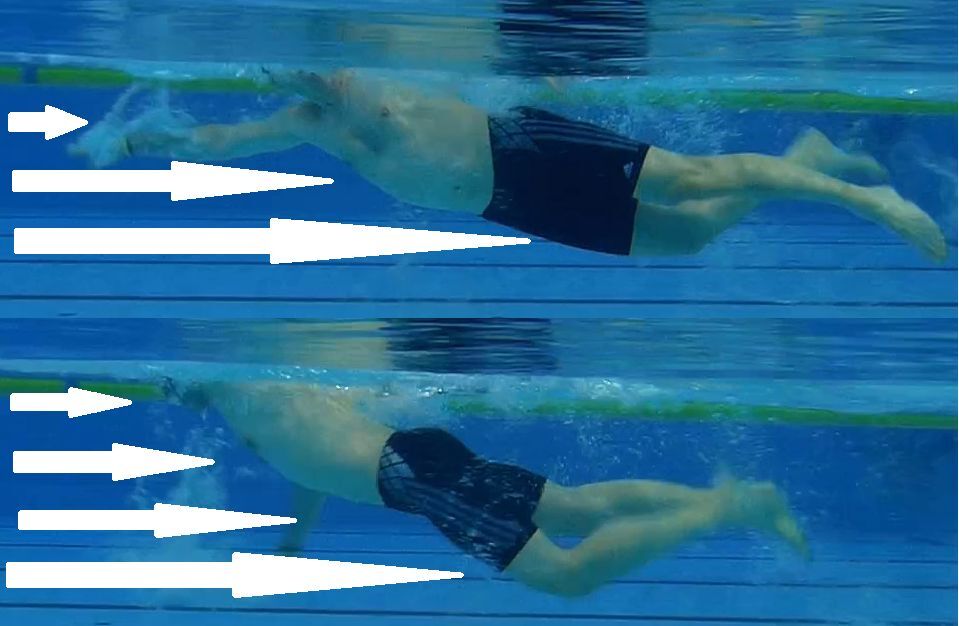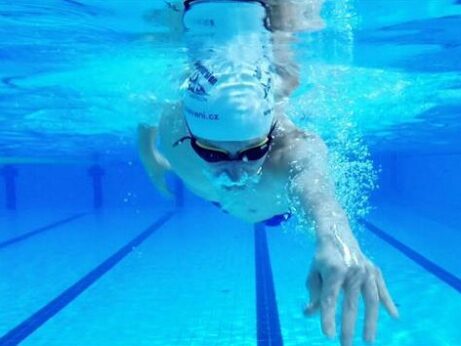Easier swimming? Improve the shape of your body
We swim in water that is about 900 times denser than air. You probably know how air can slow you down on a bike, even at a relatively low speed.
And of course, the higher the speed, the more the air slows us down. This is one of the reasons why developers of aircrafts, bullet trains and other vehicles are looking for the optimal shape to be functional and at the same time aerodynamic (in the case of ships and submarines hydrodynamic).
They have an almost perfect aerodynamic or hydrodynamic shape. But we can get close to the it.

It is not so difficult to learn such a position. It is much more difficult to keep it while swimming. See in the image below how the shape of the body can change in a not very skillful swimmer.
At one point, he is quite hydrodynamic and creates relatively little resistance to water. In another part of the stroke, his position changes significantly and the ideal of hydrodynamics is completely lost. You can see here how many resistive forces are created.

This can be very exhausting and the vast majority of energy is spent on overcoming resistance forces and not on moving forward.
How to get out of it?
How not to create unnecessary resistance and maintain an optimal body shape?
1. Master the hydrodynamic position
For a person it looks like this: slightly on the side with one shoulder out of the water and with one arm in front of the body.

We need to be absolutely sure of it, because we want to keep it all the time while we are swimming. Either on the left or right side with a short time when we move from one side to the other.
Therefore, I recommend practicing this position regularly to be really confident in it.
2. Stay long as long as possible
Keep the leading hand in extension of the body until the other hand is in front of the head.
You may think that it will slow you down. But the drag you create from the less ideal position of the body slows you down much more.

After all, even sprinters swim like this. The image shows Nathan Adrien, holder of the gold Olympic medal from 2012 on the 100m freestyle. Do you see how the hands almost meet in front of the body? He knows that it is important for him to stay long, because then he will swim faster.
3. Gain enough momentum from the center of the body
It doesn’t matter if you use an economical two-beat kick or a six-beat kick as sprinters. The important thing is that the kick helps the movement of the whole body, which gives you an impulse to glide forward. This will allow you to keep your leading hand in front of the body.
Gliding with the impulse from the hips is a very good way to maintain a long body line throughout the swim.
How do you manage to stay long and glide through water? If this is not perfect, practice the three points from this article:
- Hydrodynamic position
- Stay long as long as possible
- Momentum from the center of the body
Share your swimming experience in the comments below. Swim well!



